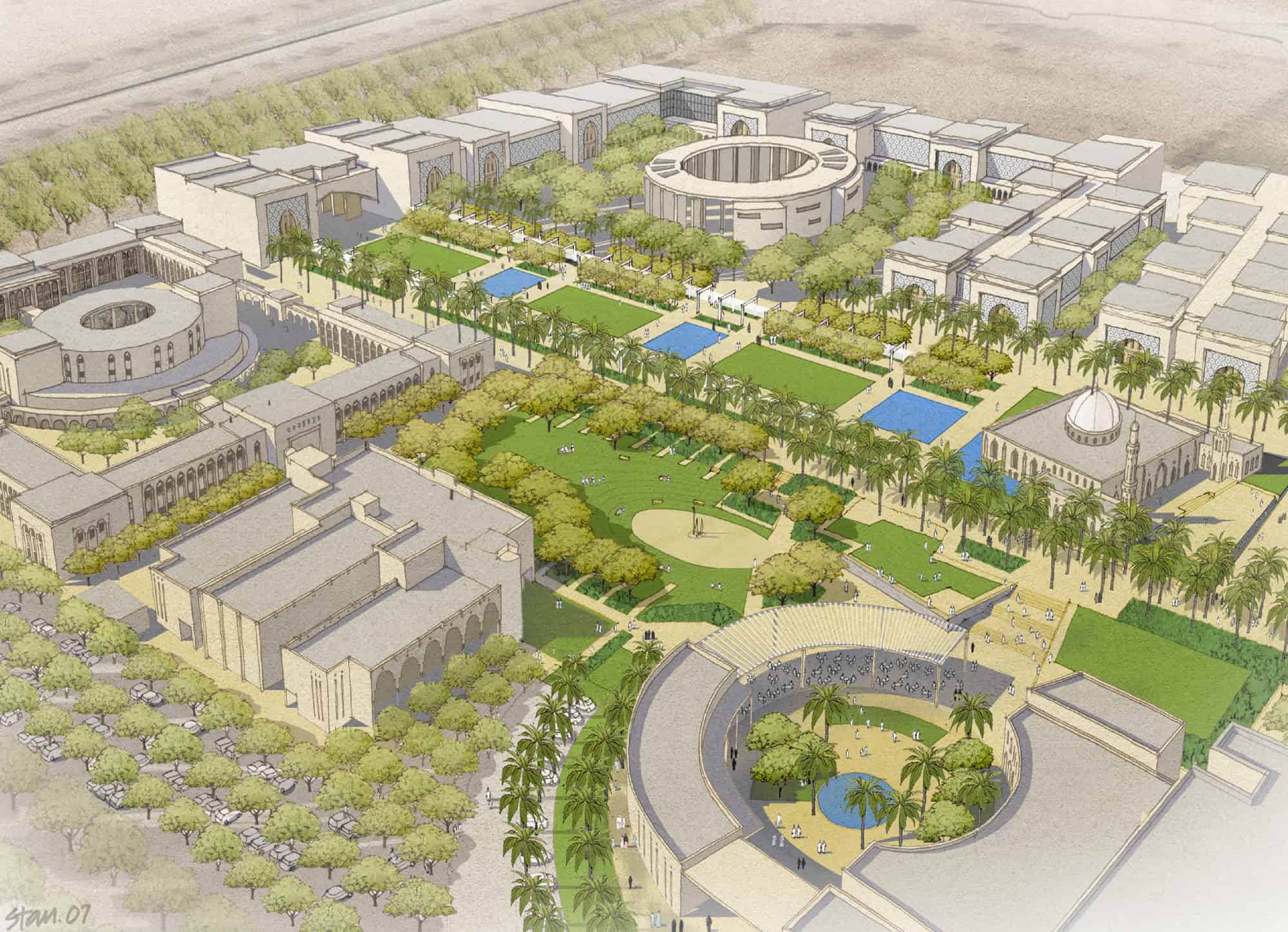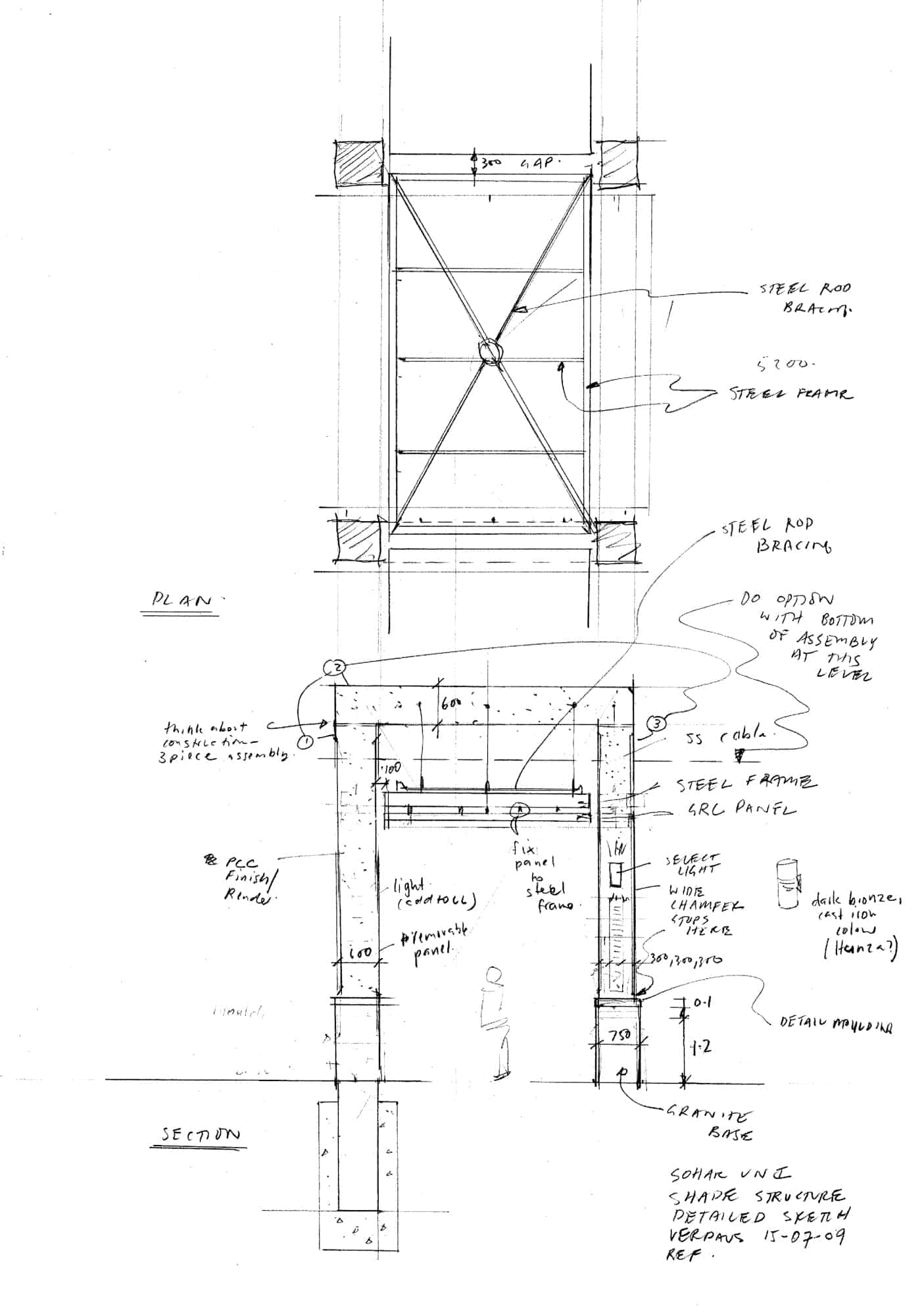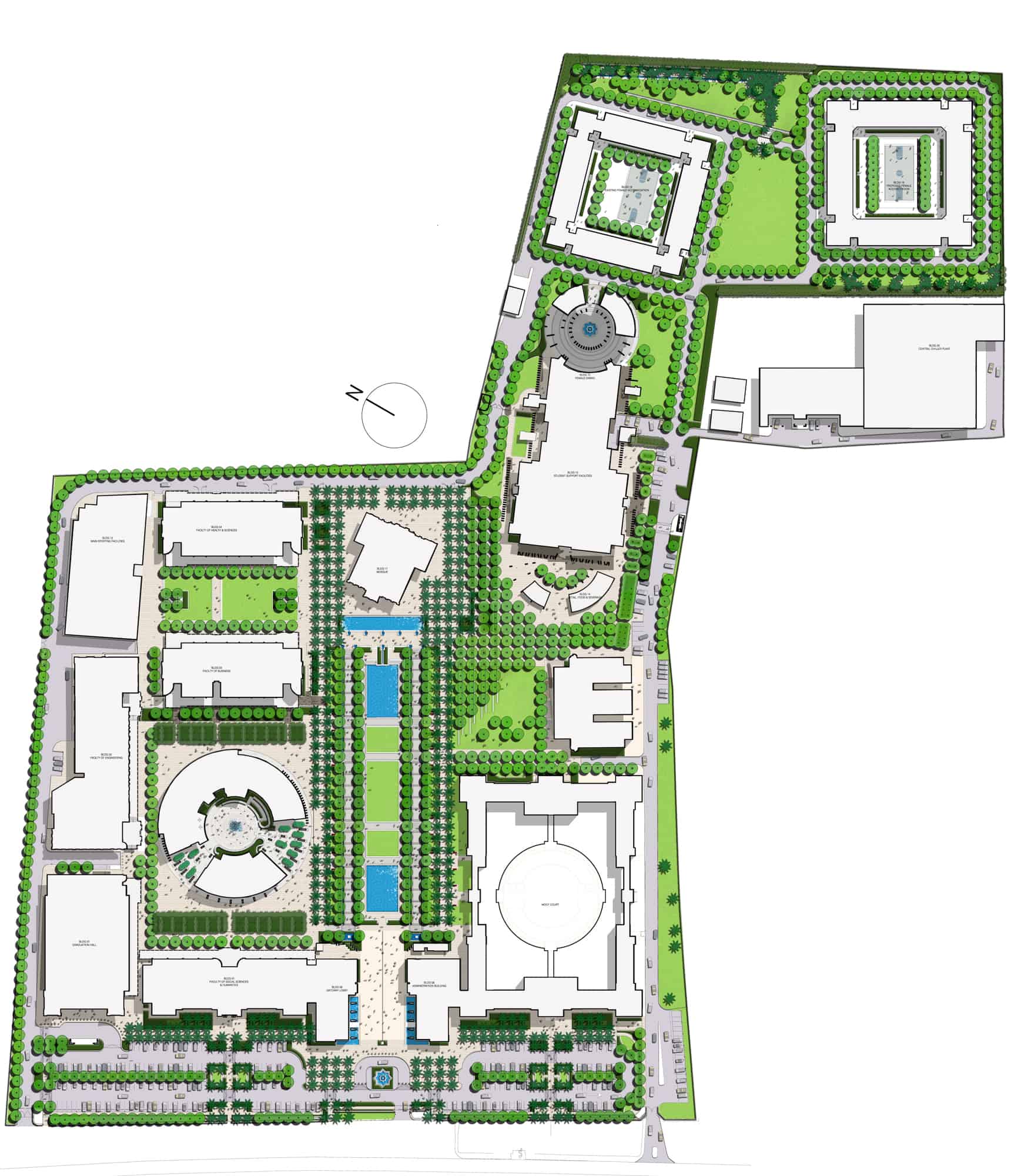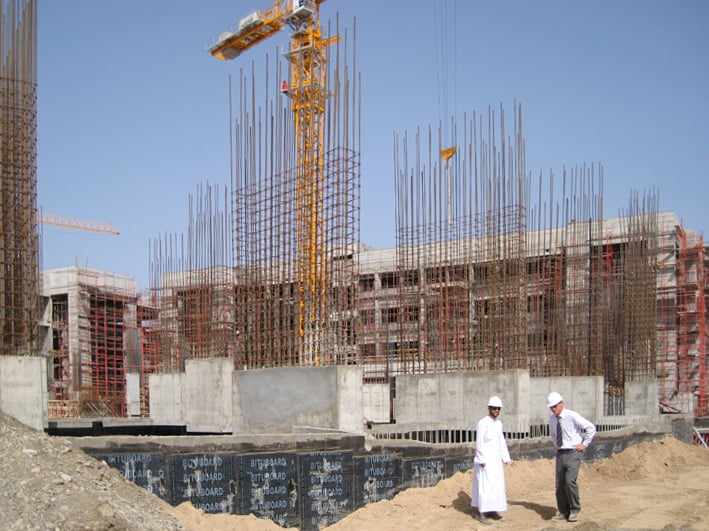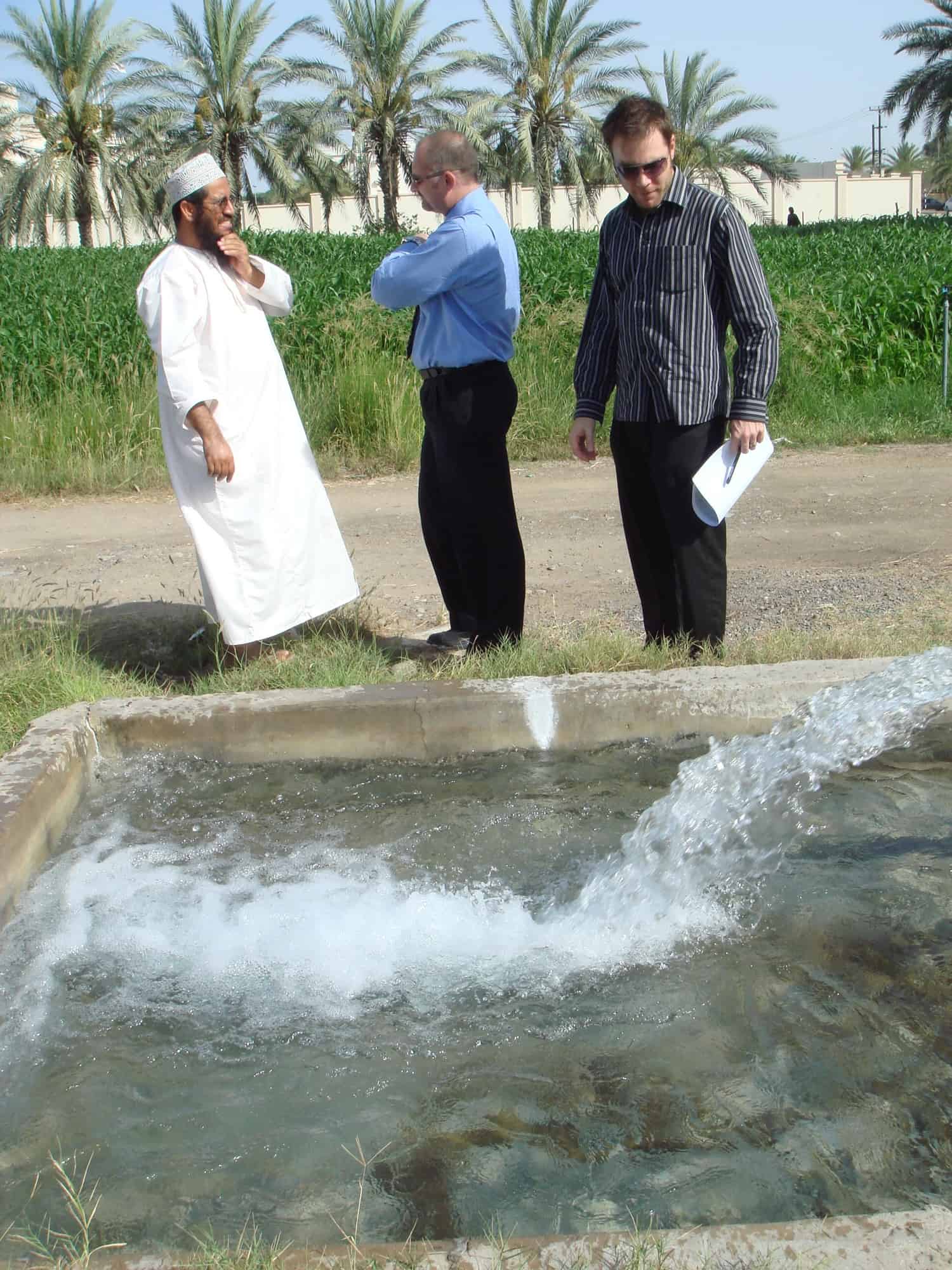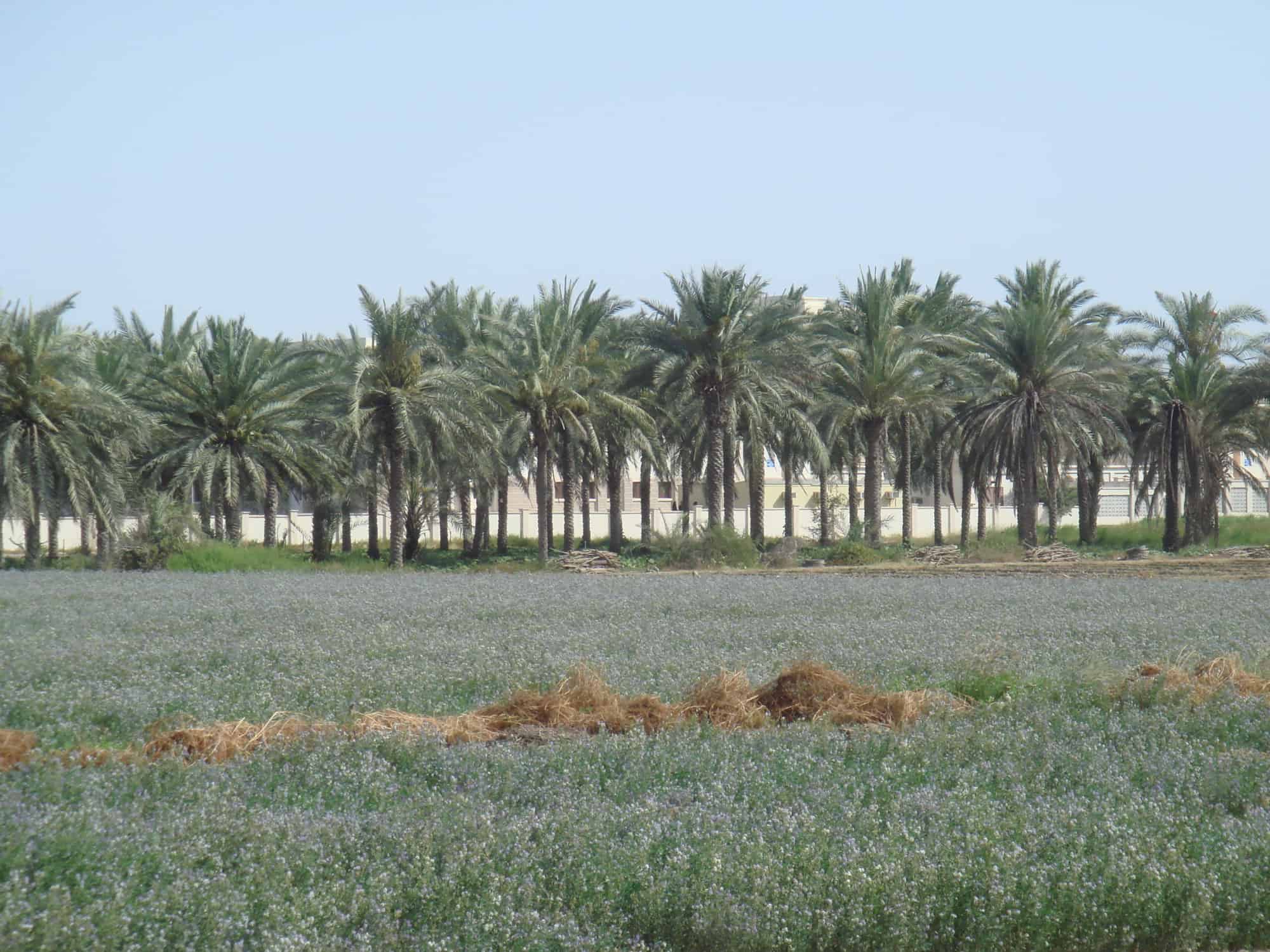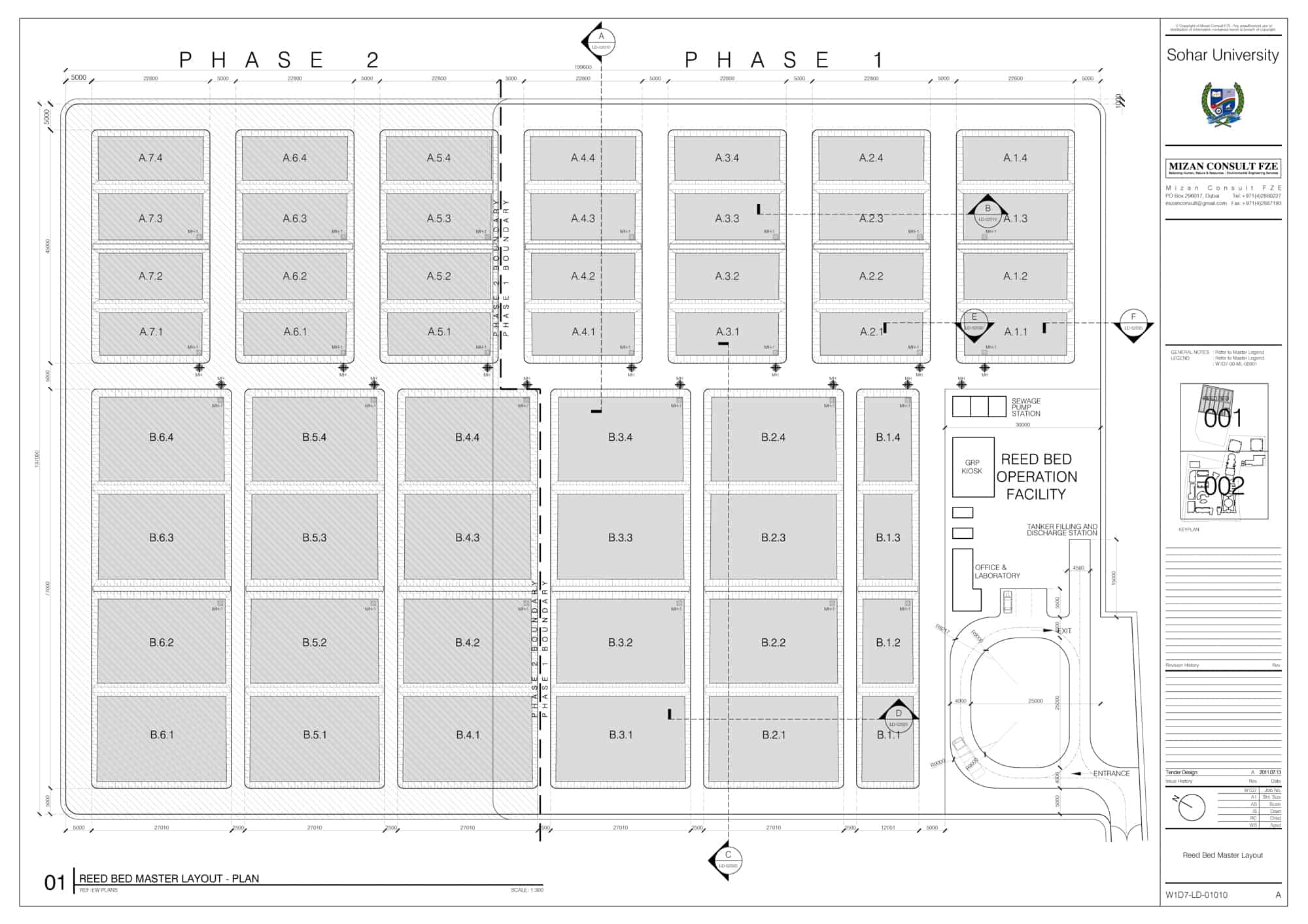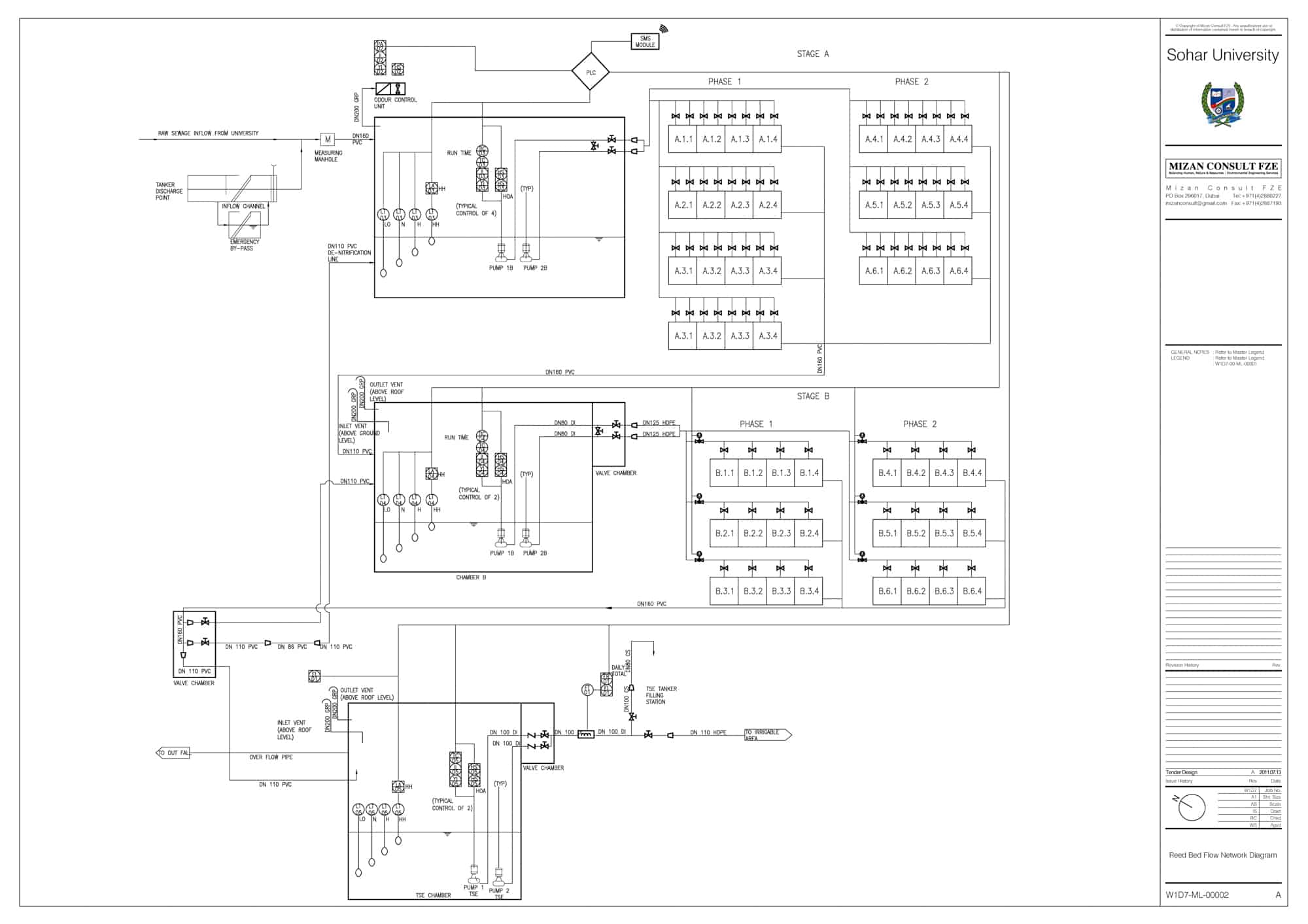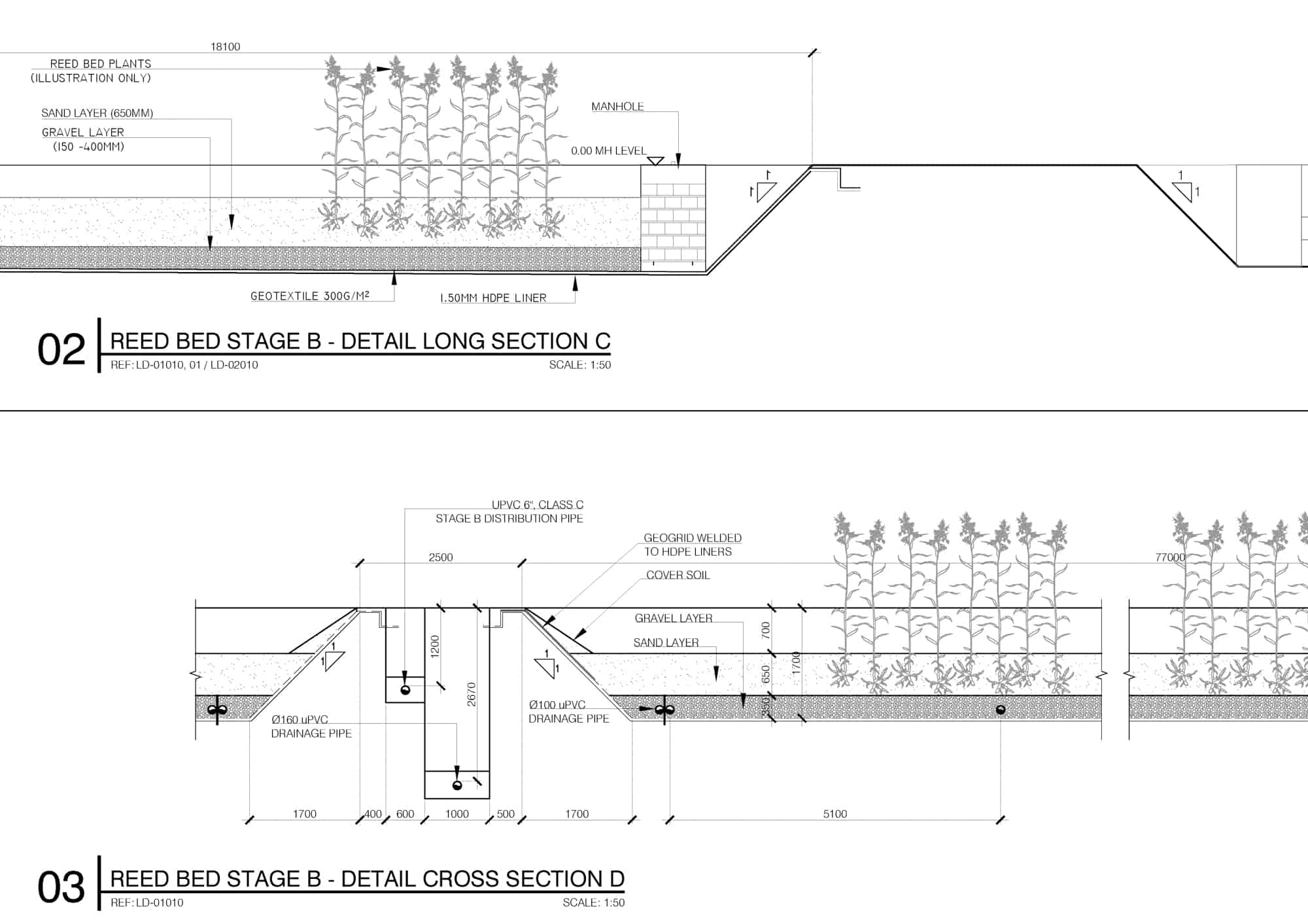Sohar University, in the fast-growing industrial port city of Sohar on the Omani Batinah coast, planned to expand to cater to 12,000 students. As part of this project, the university commissioned Verdaus to design the new university campus grounds.
In developing the site layout with architects Design Inc, the design team referenced traditional Middle Eastern principles for site planning. For this reason, it arranged buildings, including existing ones, around the plot perimeter to create a large open space in the centre. Within that space, paths follow an ordered grid, while palms and trees offer shade.
